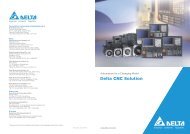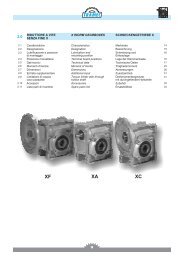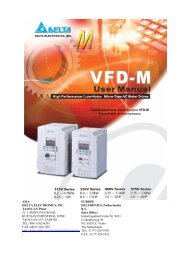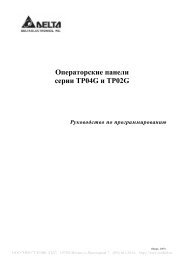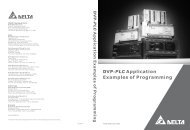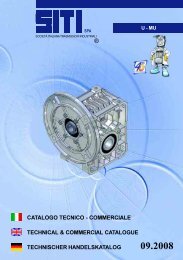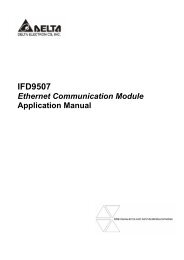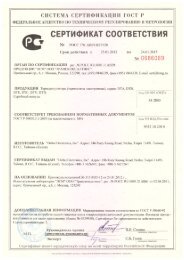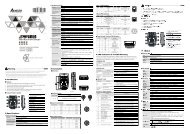Medium Voltage Application Guide
Medium Voltage Application Guide
Medium Voltage Application Guide
You also want an ePaper? Increase the reach of your titles
YUMPU automatically turns print PDFs into web optimized ePapers that Google loves.
13679.A<br />
4.3 Safety Considerations<br />
Switchgear interlocking systems<br />
SWITCHGEAR<br />
Interlocking between different switchgear apparatus and enclosure access covers and doors enhances personnel<br />
safety, as well as improving operational convenience. If a switching device can cause serious damage in an incorrect<br />
position, this must also have a locking facility.<br />
Interlocking uses electrical and mechanical methods or a combination of both.<br />
IEC 62271-200 states mandatory rules for switchgear interlocking:<br />
For metal-enclosed switchgear with removable switching apparatus:<br />
the switching device must be in the open position before it can be withdrawn<br />
the switching device can only be operated in the positive service or test position<br />
the switching device cannot be closed unless the auxiliary control circuits required to open the switch are<br />
connected. Auxiliary control circuits cannot be disconnected with the switching device closed in the<br />
service position<br />
For metal-enclosed switchgear with disconnectors:<br />
<br />
<br />
<br />
<br />
Methods<br />
a disconnector cannot be operated under conditions other than those for which it is intended to be used<br />
a disconnector cannot be operated unless the main switching device is open<br />
operation of a main switching device is prevented unless its associated disconnector is in a positive service,<br />
test or earth position<br />
disconnectors providing isolation for maintenance and servicing must have a locking facility<br />
The illustration shows a common switchgear arrangement for a medium voltage power distribution system. This<br />
switchgear arrangement uses three separate interlocking methods.<br />
Typical MV power distribution switchgear arrangement with interlocks<br />
TXR_L<br />
TXR_R<br />
A<br />
B<br />
C<br />
D<br />
Incomer panel<br />
Left bus<br />
Right bus<br />
Feeder panel<br />
Interlock scheme 1 (typical)<br />
B<br />
Q-FL<br />
A<br />
Q-IL<br />
3<br />
(LOCK)<br />
(KEY)<br />
E-IL<br />
2<br />
1<br />
Q-BC<br />
(LOCK)<br />
Q-IR<br />
A<br />
E-IR<br />
2<br />
(LOCK)<br />
(KEY)<br />
Q-FR<br />
C<br />
3<br />
Q-IL<br />
E-IL<br />
TXR_L<br />
Q-IR<br />
E-IR<br />
TXR_R<br />
Q-BC<br />
Q-FL<br />
E-FL<br />
Q-FR<br />
E-FR<br />
Interlock scheme 2 (typical)<br />
Interlock scheme 3 (typical)<br />
Circuit breaker - left incomer<br />
Earth switch - left incomer<br />
Supply transformer - left bus<br />
Circuit breaker - right incomer<br />
Earth switch - right incomer<br />
Supply transformer - right bus<br />
Circuit breaker - bus coupler<br />
Circuit breaker - left feeder<br />
Earth switch - left feeder<br />
Circuit breaker - right feeder<br />
Earth switch - right feeder<br />
E_FL<br />
E_FR<br />
D<br />
D<br />
710-12280-00A <strong>Medium</strong> <strong>Voltage</strong> <strong>Application</strong> <strong>Guide</strong> Page 83






